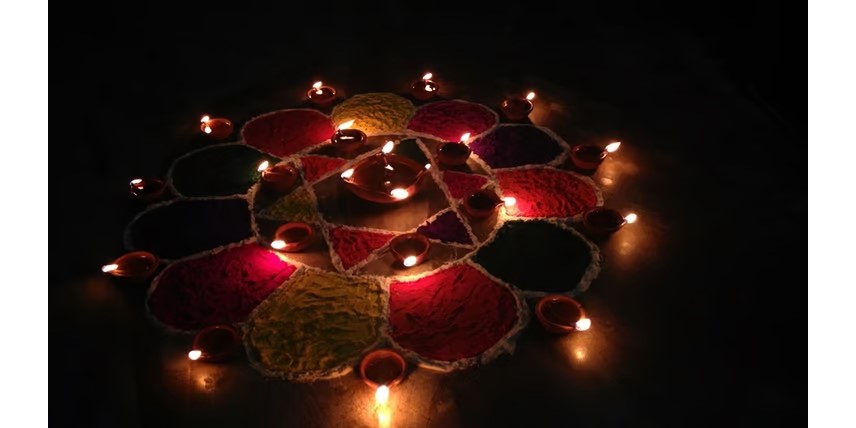Diwali is a lot more than noisy firecrackers. All that is needed is an innovative and creative push to celebrate the true spirit of the festival

Bursting noisy, ear-splitting firecrackers and contributing to the air-and-noise pollution is a nuisance that at least, thinking adults and grown-up children should discourage.
What should be encouraged instead is a grand display of colourful, dazzling fireworks in the sky which the entire community can enjoy.
We see such community events happening on the 4th of July in the American skies on the occasion of Independence Day. Sydney, too, is famous for the majestic fireshow on New Year’s Eve. There’s a picnic like milieu on the streets and in the gardens as people gather to see the fireworks display at the appointed time.
Families with small children are certainly entitled to the enjoyment of lighting rockets, sparklers, flowerpots, and the discus (sudarshan chakra). But other than that, more and more people need to give up the louder-the-better mentality and desist from bursting noise-making firecrackers.
The biggest festival of India, Diwali embraces multiple celebrations, each one of which is accompanied with a deep message. A festival of lights, Diwali signifies the celebration of good over evil. The lighting of lamps also signifies the victory of knowledge over ignorance and the shedding of darkness with light.
Celebration on
multiple fronts
It is an occasion to take-up the annual clean-up of the household to welcome and worship the Goddess of wealth. It’s a celebration of food — sweets and savouries. It’s a festival when Lord Ganesha — the remover of obstacles — and Saraswati — the Goddess of knowledge and learning — is worshipped.
Diwali is also a festival of social harmony, like most other Indian festivals, be it Christmas, Baisakhi or Eid.
What exactly do people do during Diwali? It’s essentially the biggest annual break for Hindus. People enjoy this break with all the rites and rituals of the festival; meet and greet friends and family; take a break from work and relax at home; and if one desires, go on a short vacation too.
During Diwali itself, no one would like to be distracted from their familiar holiday routine.
At the same time, Diwali offers ample room for creativity and innovation as an annual celebration on multiple fronts. The grand display of fireworks for the benefit of the community should be the starting point sooner than later.
Cleaning homes,
discarding junk
For centuries together, pre-Diwali is the period when people take to cleaning their homes and discarding junk. It is thus an ideal period to launch a national campaign and a competition to take Swaccha Bharat to the next level for the upkeep of urban neighbourhood.
The festivity in the air offers an opportunity for a celebration of sweets and savouries from across the country. Post-Diwali would be an ideal period for this, as soon after Diwali we approach Christmas and New Year. What a fantastic occasion this would be to organise intra-state or inter-state food festivals in various towns and cities.
The various state bhavans of Delhi — such as the Andhra Bhavan and Maharashtra Sadan are famous for offering the best delicacies and food fare from their states to people visiting their restaurants.
Likewise, the Dilli Haat INA Market celebrates the diversity of India with a year-round exhibition-cum-sale of handicrafts from across the country and also features a Food Pavillion managed by people from different states.
There’s a similar market, celebrating India’s diversity, in Hyderabad too. However, many more are needed — one in each city, as a symbol of India’s diversity and social harmony.
Be assured that such interesting places — with handicrafts and food delicacies from across the country would certainly do well with high footfalls during the Diwali break and other festivals.
Victory of good
over evil
Likewise, there’s an opportunity to leverage on the spirit of Diwali and create public spaces for festivals of knowledge and festivals of wealth creation (startups). How can we innovate the reading culture and re-invent libraries to catch ’em young? Wouldn’t schools and parents be interested? What about support from the CSR (corporate social responsibility) divisions of various enlightened companies?
As with other initiatives, these are year-round opportunities waiting to be tapped. The inspiration for all of this comes from Diwali which symbolises the victory and celebration of good over evil; the lighting of a lamp to shed the darkness of ignorance, and the celebration of knowledge, learning and social harmony in India.
Diwali is a lot more than noisy firecrackers, air pollution and a holiday that comes and passes by. All that is needed is an innovative and creative push to take this festival of lights to greater heights and thus celebrate the true spirit of this great festival of India.
-- FPJ